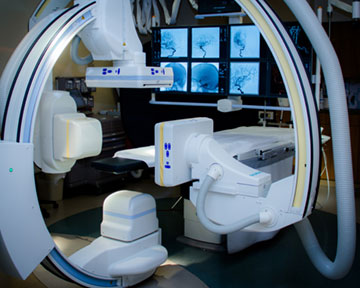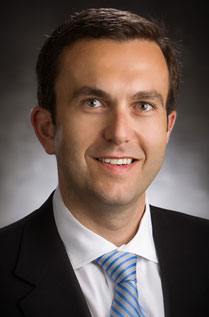It’s one of the undisputed tenets of stroke medicine: the sooner the patient is diagnosed and appropriate treatment rendered, the greater the chance for recovery and return to independent living. For decades, that time has been measured not from the time the patient was discovered with symptoms, but from the actual time the symptoms began, or was last known to be well.
 Prior to 1996, much of stroke care was focused on helping surviving patients manage the after effects: speech impediments, weakness, difficulty swallowing and other similar loss of brain function. In that year, for the first time, an FDA approved treatment became available to treat ischemic strokes (about 85 % of all strokes) acutely: tPA (tissue plasminogen activator.) Dubbed ‘the clot buster’, tPA was declared effective at breaking up these blocked arteries – if administered within three hours of onset of symptoms, or last known well. Later studies published in the late 2000s demonstrated that some patients could benefit even if tPA was administered within 4.5 hours after last known well. However, beyond 4.5 hours, the risk of bleeding was greater than any potential benefit.
Prior to 1996, much of stroke care was focused on helping surviving patients manage the after effects: speech impediments, weakness, difficulty swallowing and other similar loss of brain function. In that year, for the first time, an FDA approved treatment became available to treat ischemic strokes (about 85 % of all strokes) acutely: tPA (tissue plasminogen activator.) Dubbed ‘the clot buster’, tPA was declared effective at breaking up these blocked arteries – if administered within three hours of onset of symptoms, or last known well. Later studies published in the late 2000s demonstrated that some patients could benefit even if tPA was administered within 4.5 hours after last known well. However, beyond 4.5 hours, the risk of bleeding was greater than any potential benefit.

In the first years of the 21st century, scientists and physicians began looking for ways to extract the large clots that tPA could not break apart. Devices were developed – the first generation resembled corkscrews – that could be sent up through the artery to engage and remove the clot. In other iterations, a catheter with suction on the end attempted to aspirate the clot out. Although these treatments were groundbreaking in their ability to open up arteries blocked by large clots, that did not always translate into independent function.
“It was the newer generation of these devices, developed in 2010-2011, that truly revolutionized the field,” says Pankajavalli Ramakrishnan, MD, PhD, a neurointerventionalist with Riverside Neurovascular Specialists. She explains: “The MR CLEAN trial came out at the end of 2014, the first large randomized endovascular trial to show the overwhelming efficacy of mechanical thrombectomy using devices to pull the clot out and open up these large blood vessel blockages.” A series of similar trials came out in 2015 – ESCAPE, EXTEND IA, REVASCAT and SWIFT PRIME – but were halted early because of MR CLEAN trial’s overwhelming result in opening the large artery blockages and restoring patients’ independent function. “It was standing room only at the International Stroke Conference in 2015 when this was presented,” Dr. Ramakrishnan remembers. “What had been a good thing in theory became the standard of care that very day.”

“Besides opening up the blood vessels, these trials also demonstrated that these mechanical thrombectomy procedures could be done effectively on patients presenting as much as six hours after last known well,” adds Wolfgang Leesch, MD, another Riverside neurointerventionalist. “Now specific treatment became available for people whose large arteries are blocked – against which tPA is quite powerless.”
While the window of time to effectively treat stroke patients had clearly been expanded, minutes still count. With this in mind, Riverside neurointerventionalists saw the power of this new data and immediately envisioned a further potential life-saving application. Realizing that time will always be of the essence when dealing with stroke patients, they went to the Peninsula EMS Council in early 2016 to advocate for a change in protocol in the field.

“Up to that point, suspected stroke patients were taken to the nearest stroke center, but not all of these centers had the specialists, facilities and equipment to perform these complex mechanical thrombectomies,” Dr. Ramakrishnan notes. “Often patients with the severest strokes then had to be transferred to the Comprehensive Stroke Center at Riverside. That involved phone calls, a second ambulance ride, intake and surgical suite preparation – costing precious time.”
The devastating effects of delay are well documented in stroke literature: the brain loses two million neurons per minute when deprived of oxygen. A 15-minute delay results in a loss of a quarter of a billion – with a B – neurons. The Peninsulas EMS Council unanimously signed on, and set a start date of March 1, 2017.

The immediate challenge for the neurointerventionalists was how to help EMS personnel identify stroke patients in the field who needed the more extensive treatment at the Comprehensive Stroke Center. “For this, we relied on the previously validated RACE scale,” Dr. Leesch says, referring to the Rapid Arterial oCclusion Evaluation screening tool. This scale scores the severity of the patients’ deficits, and higher the score, the more severe the stroke is likely to be.
Two months prior to implementation, EMS staff were trained to use RACE. “Any patient with a RACE score of five or greater would be taken directly to the Comprehensive Stroke Center,” Dr. Ramakrishnan says, “if it didn’t prolong the trip by more than 15 minutes.”
The data since the institution of the protocol was collected and compared to before its implementation. Dr. Ramakrishnan and her colleagues at the Riverside Comprehensive Stroke Center were selected to present their findings at the January 2018 International Stroke Conference. The preliminary results show a clear benefit for the patients since its implementation: more patients were treated quickly and achieved independent outcomes than previously achieved. The implementation of this protocol highlights the successful partnerships between the Peninsulas EMS and the community hospitals. “We are much better at triaging stroke patients, and getting them to appropriate, life-saving care,” Dr. Leesch says. While patients and their families might worry that taking the extra 10 or 15 minutes in travel time to the Comprehensive Stroke Center might hurt them, in reality, the opposite proved to be true. In fact, Dr. Ramakrishnan adds, “By taking these patients directly to the Comprehensive Stroke Center, we’re also able to treat more patients with tPA and mechanical thrombectomy in a timely manner, and more patients are achieving meaningful, independent outcomes.”
As reported in the January 4, 2018 issue of The New England Journal of Medicine, the DAWN trial demonstrated that “among patients with acute stroke who had last been known to be well 6 to 24 hours earlier, and who had a mismatch between clinical deficit and infarct, outcomes for disability at 90 days were better with thrombectomy plus standard care than with standard care alone.” A subsequent trial, the DEFUSE 3, published in the February 22, 2018 edition of NEJM, concluded that “endovascular thrombectomy for ischemic stroke 6 to 16 hours after a patient was last known to be well, plus standard medical therapy resulted in better functional outcomes than standard medical therapy alone, among patients with proximal middle-cerebral-artery or internal-carotid artery occlusion and a region of tissue that was ischemic but not yet infarcted.”
These two studies, both randomized multicentric trials, came out overwhelmingly in favor of opening up the patient’s blocked arteries, provided it could be demonstrated ahead of time that the patient had more brain to lose than had already been lost.
Riverside’s Chief Clinical Operations Officer, Michael J. Dacey MD, recently joined the Riverside Health System and stated, “As a critical care physician for the last 20 plus years, I have seen strokes, case after case, lead to death or severe disability. As noted, the recent DAWN trial is a huge benefit to our community. Riverside Regional Medical Center’s physician and clinical team have clinical outcomes equivalent to any of the academic centers in the Boston area where I recently came from.”
Now the standard of care has changed again. “If a patient has a large artery occlusion and last known well time was anywhere up to 24 hours, and it could be demonstrated that a significant portion of the brain, while still at risk, was not dead, that patient might benefit from thrombectomy to remove the clot,” Dr. Ramakrishnan says. “So whereas previously, we could only treat patients up to six hours from last known well, we can now offer hope for recovery up to 24 hours. It’s an enormous advance.”
For more information about our Neuro-interventional team go to Riversideonline.com/neurointervention
Riverside Hampton Roads Neurosurgical & Spine Specialists
Riverside Neurovascular Specialists
12200 Warwick Blvd, Suite 410; Newport News
(757) 534-5200

